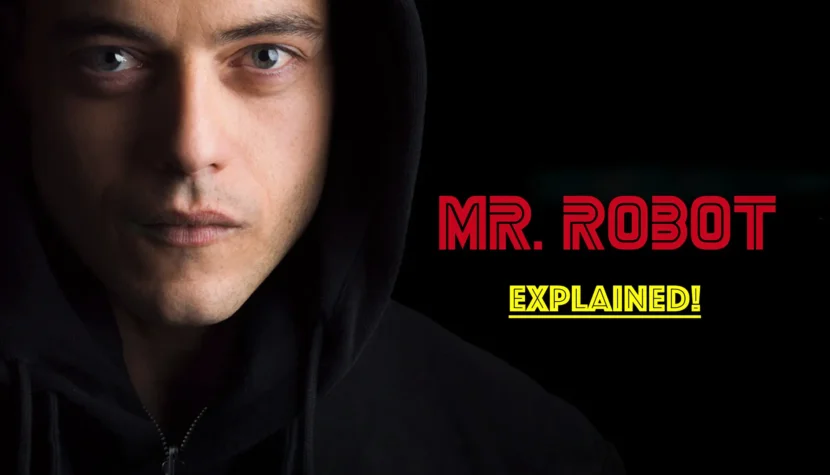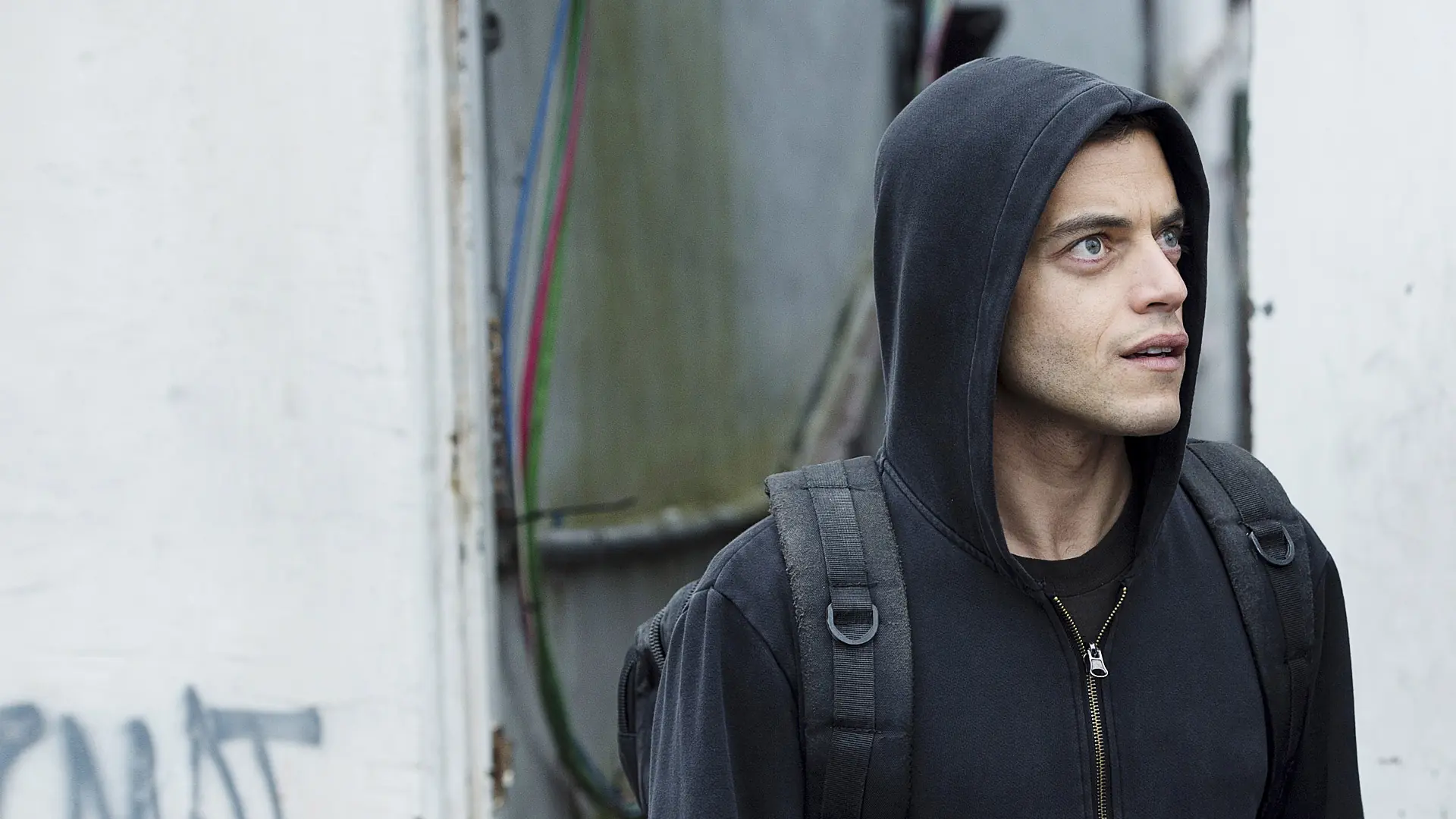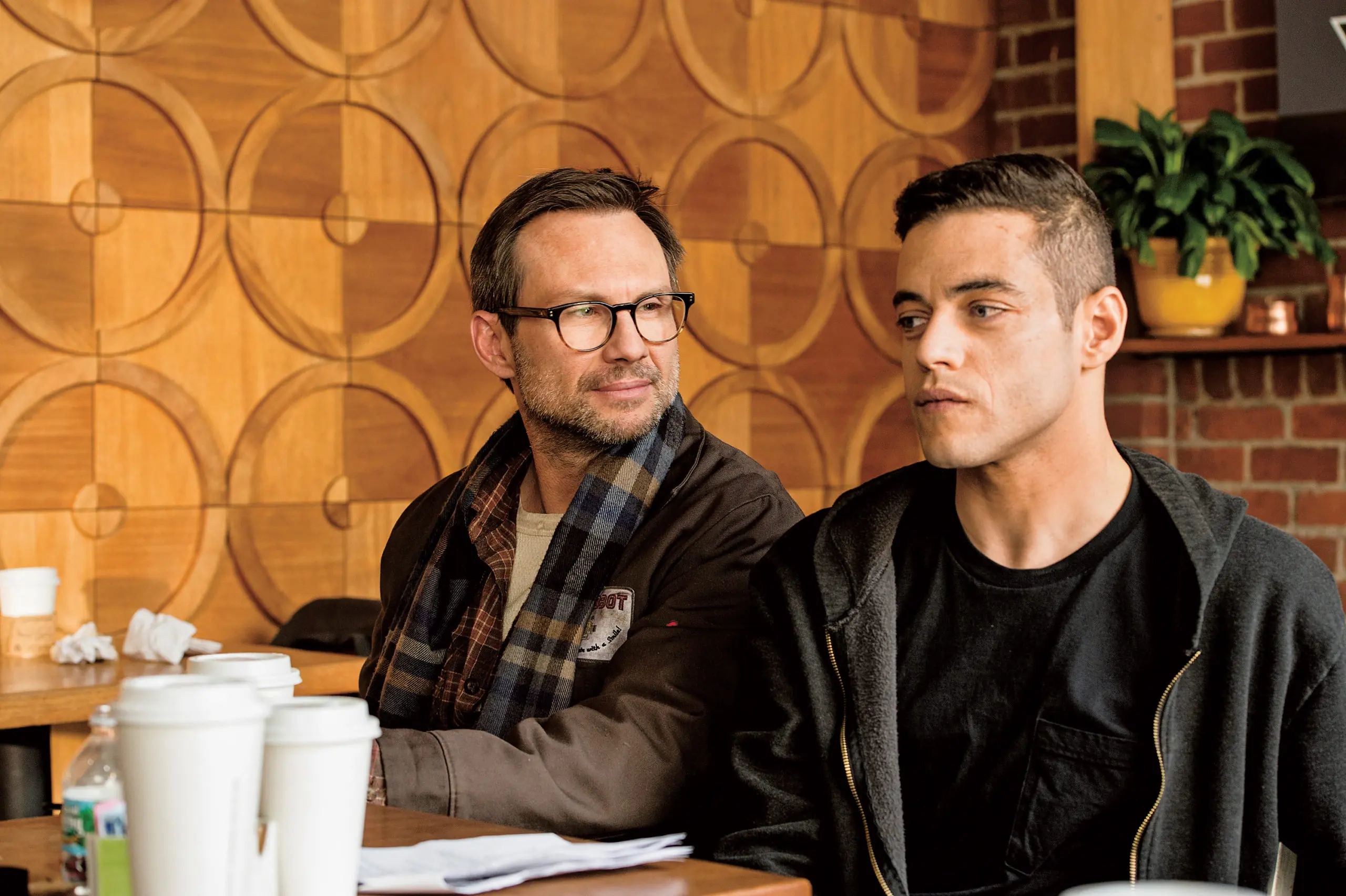MR. ROBOT Decoded: A Hero’s Death and the Fall of Democracy

IV
In the beginning, there was chaos, and the chaos was within Elliot, and Elliot was the chaos. You cannot establish order when you only view fragments of the situation, acting based on incomplete knowledge. It’s only over time that the protagonist starts to understand that power is never in plain sight. It’s rather seized by those sitting in the backseat of history. In Mr. Robot, hidden power is embodied by Whiterose, the Chinese minister who holds sway over the most important American institutions. She is literally everywhere, controlling everyone, which is why Elliot’s actions can never lead to positive change. The hacker, eternally striving for good, eternally causes harm. He doesn’t understand that revolution is not a one-time gesture that reverses processes set in motion over decades. He dreams, as he mentions in the opening monologue of the series, that he’s fighting against injustice, but in reality, he’s contributing to the project of a new world, where physical money is replaced by e-coin, and every transaction is meticulously monitored by both government and corporations. Furthermore, in the course of his battle, Elliot continues to hurt more people along the way. Therefore, it’s hard to definitively say whether we’re dealing with a positive character worth rooting for, given that he sows nothing but destruction.

V
So, who should we root for if the protagonist is not trustworthy? Certainly not for fiction, answers Sam Esmail, while cynically guiding viewers through the entire cathartic cycle. He starts by planting doubts in the viewer’s mind about the validity of the mechanisms governing the depicted world, crafting it in such a way that it closely mirrors the reality we know. He then destroys the trust between the audience and the protagonist-narrator. Later, he introduces a real bombshell—the storyline of childhood abuse as the cornerstone of Elliot’s personality—and ultimately reveals the joker: the main character of the series doesn’t exist, but is just another version of the true self of the unseen protagonist. A symbolic death of the hero follows, preceded by the murder/suicide committed by “dark” Elliot against another version of himself—this time a happy one, about to marry Angela.
It turns out that viewers weren’t rooting for the real hero but only for a fantasy. In fact, as stated during the final episode, the viewers are voyeurs, passive companions observing Elliot’s journey. He needed us because he drew pleasure and strength from our presence. He needed us because our presence confirmed his ontological status, but we also needed him, because the character played by Rami Malek wasn’t just fulfilling the dreams of his original version—he was also engaging with our fantasies. The ending of the third season is particularly telling, when random passersby stand in front of a store window watching Superman’s adventures on television screens. Everyone is fascinated by the scene, as the hero attempts to turn back time to save the woman he loves. This is exactly what the viewers’ fantasy is about—since the world outside is crushing us, at least in front of the TV screen, we should taste victory over an unjust system.

For this reason, Mr. Robot can be called a superhero series. We have “superhuman” skills, the awareness of being exceptional, a messianic idea of self-sacrifice for the good of humanity, and even a villain who wants to take control of the entire world. The wonderful paradox lies in the fact that Esmail drives the plot in a way that’s the opposite of predictable, making viewers actually root for Whiterose, not Elliot. While the protagonist, a fictional character, symbolically kills himself and first destroys the established order, Whiterose seeks to erase the existence of suffering in human life. She wants to reset time, returning humanity to the days before tasting the forbidden fruit, to the land of innocence. Her character is even shaped this way—she is a victim of love, with her true face adorned in a white dress; in a flashback from her youth, we also see white roses stained with the blood of her lost lover. The secret machine she’s building, hidden beneath a nuclear power plant, is meant to help transition to an alternate reality where things will unfold according to dreams, not the ruthless judgments of fate.
There are countless references to the Bible, especially the theme of resurrection, in Mr. Robot. Just think of how many times Elliot was supposed to die—once even at the hands of Esmail himself in the first episode of season four, only to be miraculously saved each time. The final season unfolds during Christmas, and there are also elements tied to Jesus’ death (like the cross), but I have to admit, I’m more fascinated by the dedication with which Whiterose engages in her endeavor. Perhaps my sympathy stems from the extraordinary similarity between her and Kirillov, one of the most insane characters in Fyodor Dostoevsky’s works. Kirillov from The Demons is a loner who believes that freedom can only be achieved through suicide, by giving God back the rotten ticket that grants existence in this despotic world. The Russian atheist believes that on “the other side” there lies eternal harmony, a space ready to be inhabited by a soul freed from the shackles of the physical world. And isn’t this exactly how Whiterose ends? She believes that stopping her heartbeat is merely an act of shedding suffering in favor of an alternate world where she can finally be herself, without any negative consequences. She pays the ultimate price for freedom, while Elliot clings to life almost until the very end. Only when he lets go, just like Whiterose, does salvation come to him.

Of course, the salvation is fictional, just as the entire series is fiction. The show ends with happy resolutions to many plotlines, because that’s how superhero productions work, offering comfort to the heart—that’s how pop culture operates. Escapism is most visible in the tenth episode of season four, when Darlene tries to escape the U.S. with Dom. In the background, Run Away with Me plays, and viewers cheer, hoping the women will succeed in leaving. The same applies to the next level of Elliot’s consciousness, where he’s finally happy. Let’s be honest, anyone even slightly emotionally invested in Mr. Robot was childishly delighted to see the hero finally succeed and realize his dream of forming a serious relationship with Angela. However, it turns out that art is poison.
I’m surprised by the positive and life-affirming message in Sam Esmail’s series. In the end, it turns out that solace can only come from a relationship with another person, from giving up the illusion of control in favor of genuine connection. Only in the love of another person lies salvation. Not fantasy or artificially inflated cathartic power, not a childlike belief in quick fixes for deeply complex problems, but love and sincerity can lift us out of dry theorizing about the hopelessness of the world.

To conclude, I’ll allow myself a moment of honesty. I’m aware of the chaotic nature of the argument presented above. Mr. Robot has such a convoluted structure, and Sam Esmail touches on so many themes, that a fully substantive and detailed analysis of the series would be material for a multi-page book. These aren’t grandiose statements, but a certainty that in this production, we’re dealing with something truly exceptional, far beyond the typical television format. We’re dealing with a series stretched between the need to tell the story of the individual and an attempt to deeply analyze the direction in which contemporary societies are headed.
Nevertheless, I leave this essay in its current state, as it is an expression of sincere admiration for the work put into it, and above all, for the courage and intelligence of the creator in presenting certain themes. My essay could be compared to a child’s drawing for Mother’s Day. We know that the green leaves and red petals of the flower lack a bit of flair, that it could be presented much better, but what of it—the heart put into creating the gift is what matters.

